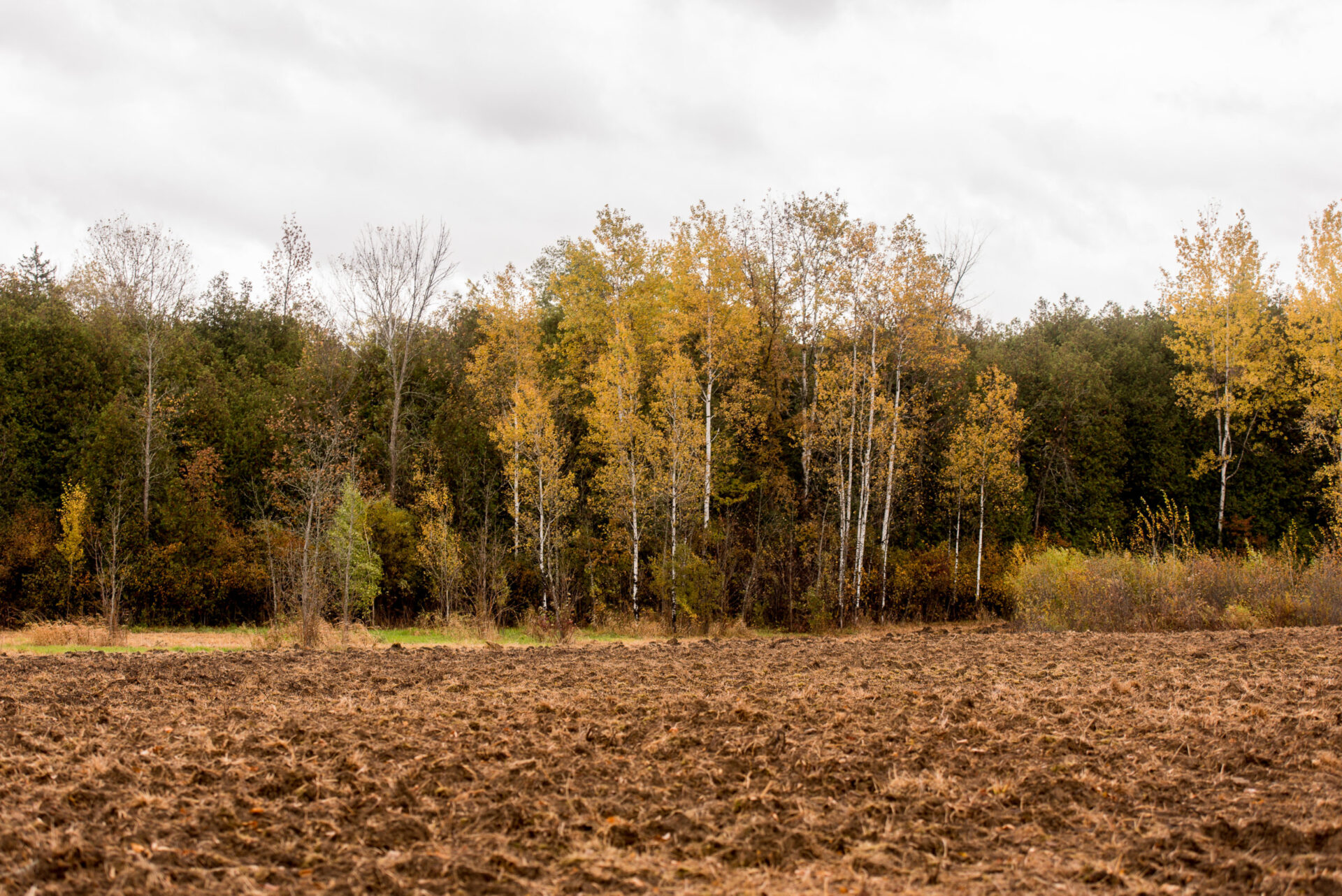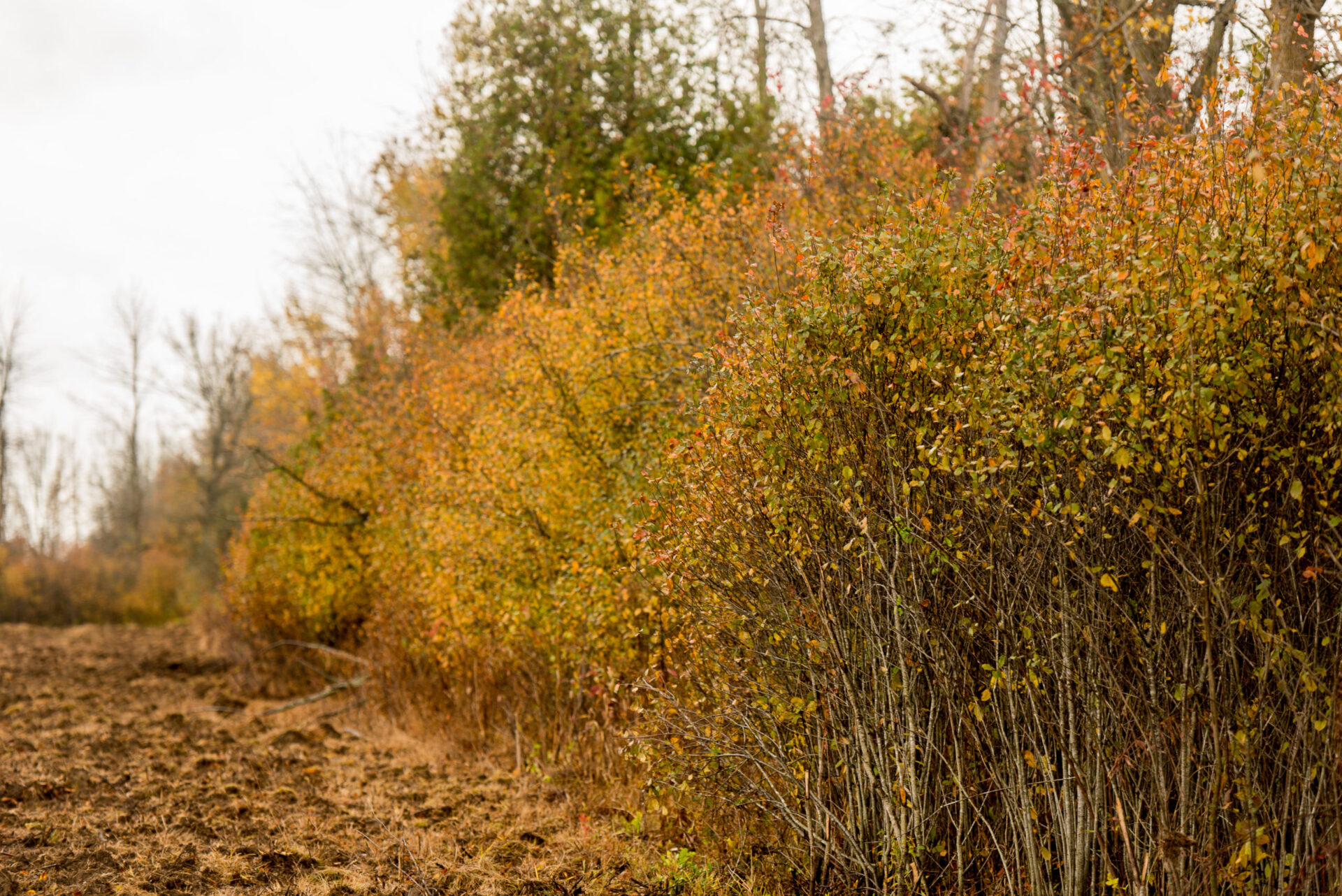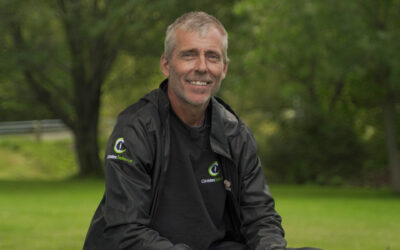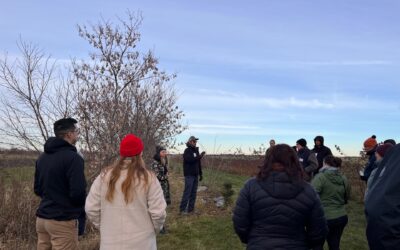The Andrews family moved to Metcalfe, ON, where they discovered they had vulnerable grassland species on their property.
When the COVID-19 pandemic took hold, Kurtis and Lara Andrews took it as an opportunity to return to a rural lifestyle, moving their family to Metcalfe, Ontario in 2020, where they also discovered the ALUS Ontario East community.
“I have an affinity for nature, because of the vivid memories I have as a kid, working on the farm, interacting with wildlife of different kinds. There were always woodlots to explore around the area,” says Kurtis.
Now, the Andrews manage 52 acres of hay on a part-time basis. Another part of their farm is comprised of two small plots of pastureland that have been uneconomical for many years. These uneconomical pastures make ideal sites for Kurtis to establish his ALUS projects in 2023.
Some of the wonders of the Andrews’ farm remained hidden when they purchased the land in late fall. During the first spring, the grasses filled with signs of wildlife. After the snow had melted in March, one parcel of low-lying pasture erupted with the distinct reeeek of frogs. The Andrews were also pleasantly surprised to hear grassland songbirds singing in the crisp spring mornings.

Local and national ALUS team members visit the Andrews’ new wetland project site. This woodlot and adjacent wetland project will create perfect habitat for various animals.
Kurtis found out that the prior farming operation had cut their hay late for some time. The delayed haying allowed for breeding songbirds to utilize the pastures all spring, and therefore they formed healthy populations in and around his property. Although the Andrews couldn’t have anticipated the wealth of wildlife at their farm, they recognized the value of protecting the various Species at Risk (SAR) that can be found on the marginal parcels of land.

This woodlot on their property provides habitat for frogs, birds and mammals.
They sought out solutions to ensure that long-term habitat was available to the wildlife populations. They turned to non-profit organizations like Grasslands Ontario and the South Nation Conservation Authority to support this SAR habitat.
“While those old practices were common, they weren’t necessarily deliberate to provide a breeding habitat for birds, but there’s the link, and that’s why we have this particular situation. So, we want to work to preserve that,” explains Kurtis.
Supporting the Andrews with preliminary information and management payments, ALUS helps compensate the Andrews for the ecosystem services that are produced by delaying the hay cut. For many ALUS participants, these simple interventions are all it takes to conserve prime habitat for multiple species at risk.
The Andrews’ next projects include improving a grassland eco-buffer around their pasture to improve soil health and securing a small wetland area utilized by amphibians. Grassland birds have diminished by two-thirds since the 1970s. These projects have the capacity to make a positive impact on the population health of these SAR, moving them further from species extinction.

“I have three kids. When I’m not here anymore and my wife’s not here anymore, they are going to be picking up the pieces when it comes to the state of our environment. What we do here on our farm, this property, this is what we have control over directly,” says Kurtis.
In a sense, Kurtis and Lara now share a part of their own childhoods with their three children. They are engaging in wildlife stewardship, while also thoughtfully planning for climate uncertainty. The Andrews recognize the importance of these small interventions, which will keep birds singing on their farm for years to come.
To read more about grassland birds and tallgrass prairie restoration options, check out this report from Birds Canada.



